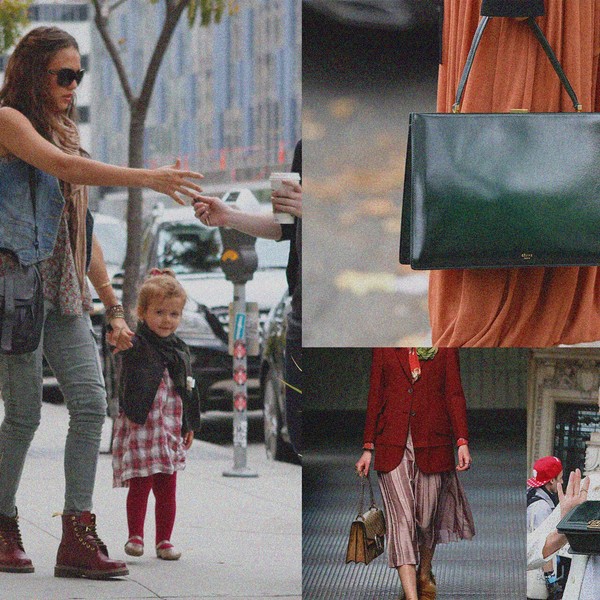An Intimate Tour Of The NYT Cooking Studio Kitchen
Deputy Editor Genevieve Ko shows us how personal style influences the space—and recipes.

When NYT Cooking Deputy Editor Genevieve Ko was planning the publication’s annual Thanksgiving pie spectacular, she toyed with the appropriate level of culinary experimentation. One such battle came to light in her Cranberry Lemon Meringue Pie. “The first time I made the cranberry lemon meringue filling, I tasted it and I was like, ‘Oh my God, it's perfect,’” she recounts. “Every once in a while, you get these unicorns where you just nail it on the first try.” Then, she assessed how much work she had put into that single recipe. Multiple steps, multiple dishes and tools, straining, setting—techniques too advanced for your average home cook.
“So the process then became, ‘how do I get back to that exact flavor and texture, which feels the truest to me, without the hassle?’” Ko explains. The development process exercised creativity not in flavor but in craftsmanship. The deputy editor considered the pungency of her lemon in this holiday equation—perhaps the average baker might prefer a little more sweetness, a little less tartness—but stuck to her initial inclinations. “It was a pretty puckery, tangy filling because I just love that intense tartness,” she says. Though she’ll sacrifice in process, she won’t when it comes to style.
Ko, a cookbook author and contributor and previously the cooking editor at the Los Angeles Times, summarizes her personal style with a laugh. “Well, number one is that they are really delicious. I know that sounds silly, but it's really, really important.” In the face of Instagram and other similar forums, aesthetics can sometimes trump flavor. “I would a hundred percent always choose something that looks less snazzy, but tastes much better,” she says. “And when I say taste, I'm always thinking not just about balancing flavors but also textures.” She’s also not one for heavy cheese; you’ll find no four-cheese macaroni on this editor’s author page.
At publications like NYT Cooking today, personal style outweighs a need for a reductive, singular approach. “I don't think I can make a recipe that's not me,” Ko continues. Each of the staff cooks has a very different approach to food thanks to varied interests, skill sets, training, and backgrounds, which is what makes the collective result interesting. “I have noticed among our audience that there's certain people who know NYT Cooking so well, they know what certain people's styles are like.” One might have a flair for salads. Another makes the fluffiest cakes. (Someone has to offset Ko and appeal to the country’s love of melted cheese.)
The diversity of the NYT Cooking staff culminates in their studio kitchen. Albeit, most of the development process starts at home, this is where the perfected recipes make their debut. It’s “a studio as much as it's a kitchen,” but still comes outfitted with all the bells and whistles. Shelves of dishware line the back wall. Though the color coordinated organization tricks the eye into assuming uniformity, the collection actually comes from all over, some from traditional cookware stores, others handmade by artisans and ceramists. “We maintain an aesthetic—or we're trying to—that's pretty neutral, because we always want the food to pop,” she explains. They also hope that the NYT Cooking site is perennial; nothing should look too dated in 10 years time. “I don't know if you've ever looked back at cookbooks from the ‘70s, ‘80s like, ‘whoa, like what's going on there?’”
Ko is a minimalist when it comes to her own essentials. Her number one essential? A good knife. But then in a very, if-you-give-a-mouse-a-cookie follow-up, adds “a good cutting board because you don't want to mess up your good knife.” A good frying pan ranks close behind these two. In her kitchen, Ko prepares a rather traditional Thanksgiving feast. At work, she’s been prepping for the holiday since, well, last Thanksgiving, assessing what worked or what they hope to achieve the next go round. Her family, however, has not. Her children have come to expect the classics—stuffing, turkey, etc. Raised by immigrants from Hong Kong, Ko has also added sticky rice stuffing and stir-fried greens to the menu. Needless to say, it’s a full table.
For our visit, she whipped up a holiday-ready Caramel Apple Pie with a shortbread crust. The latter she likens to the LBD of baked goods. “It's wonderful because it's so versatile.” The thicker crust allows for a sparser filling. Another encapsulation of her personal style, Ko explains, “I could never imagine eating a pie thickness of caramel, but I'm sure a lot of people could." So she pulled back. “We often, among our recipe editors, invoke a very famous Chanel saying. You just need to take off one piece of jewelry sometimes.” Continue scrolling to tour the NYT Cooking Studio Kitchen and to hear more about Ko’s very personal approach to cooking.
Want more stories like this?
Why Is Everyone Obsessed With Tinned Fish?
Calvin Eng is the Heart and Soul of Brooklyn Hotspot Bonnie's
There's A Reason the Omakase Dining Experience is Unlike Any Other




